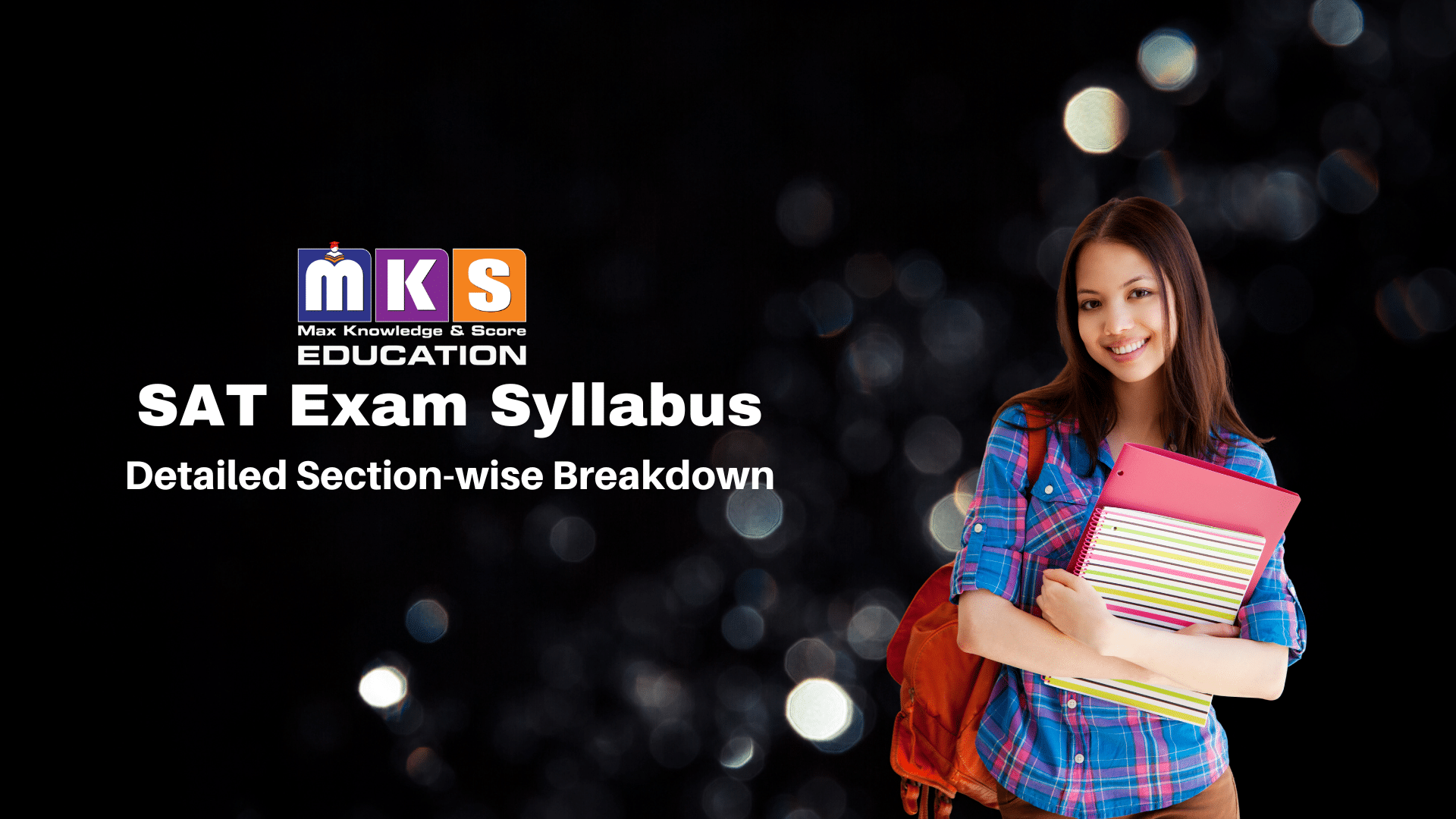SAT Exam Syllabus
SAT Exam Syllabus 2025: Detailed Section-wise Breakdown

The SAT 2025 exam syllabus is structured around subjects commonly studied in school, including English, Math, and foundational concepts in science. These areas are designed to assess a student’s readiness for higher education abroad. The SAT is now administered online, reflecting significant changes in both its format and syllabus compared to the previous version.
One major shift is the transition to the Digital SAT, which allows 43% more time per question compared to the older SAT format and 68% more time than the ACT. This redesigned exam emphasizes efficiency and a deeper understanding of core concepts. Over time, the SAT syllabus and pattern have evolved to better align with the needs of students and institutions.
This updated Digital SAT provides a comprehensive assessment, focusing on specific sections of the test, such as Math and Evidence-Based Reading and Writing. A detailed breakdown of the current SAT exam syllabus highlights these changes and provides insight into how students can prepare effectively.
The SAT syllabus encompasses subjects that students have studied throughout their school years. It primarily focuses on:
- Reading & Writing
- Mathematics
Previously, the SAT evaluated reading and writing as two distinct sections. However, the new format combines them into a single section. While science is not assessed directly as a standalone subject, the reading and writing section includes passages related to science topics. Notably, no specific syllabus is dedicated to a separate science section in the SAT exam.
SAT Digital Reading & Writing Syllabus 2025
The table below highlights the key areas assessed in the new SAT Digital Reading and Writing section. A detailed explanation of each testing area follows the table:
| SAT Reading & Writing Section Areas | Skill / Knowledge Testing Areas | Weightage & Question Distribution |
|---|---|---|
| Craft and Structure |
|
Weightage: 28% Questions: 13-15 |
| Information and Ideas |
|
Weightage: 26% Questions: 12-14 |
| Standard English Conventions |
|
Weightage: 26% Questions: 11-15 |
| Expression of Ideas | Rhetorical Synthesis Transitions |
Weightage: 20% Questions: 8-12 |
The SAT Reading section is part of the SAT’s Evidence-Based Reading and Writing section. It consists of shorter passages, each containing 10–11 questions, totalling approximately 56 questions in the section.
Each question provides four answer choices. This section is designed to assess candidates’ ability to:
- Understand the meaning of different contexts and associated terms.
- Comprehend written text effectively.
The SAT Reading section aims to test critical reading and analytical skills essential for college-level academic success.
Types of Questions in the Reading & Writing Test
- Craft & Structure
- Students are assessed on comprehension, vocabulary, analysis, synthesis, and reasoning skills.
- Focuses on understanding and using high-utility words and phrases in context.
- Requires evaluating texts rhetorically and connecting topically related texts.
- Information & Ideas
- Tests skills in comprehension, analysis, and reasoning.
- Involves locating, interpreting, evaluating, and integrating information from texts and informational graphics.
- Standard English Conventions
- Assesses editing skills for adhering to Standard English rules on sentence structure, usage, and punctuation.
- Expression of Ideas
- Focuses on revising texts to improve clarity, coherence, and effectiveness.
- Tests the ability to meet specific rhetorical goals in written expression.
SAT Digital Math Syllabus 2025
The SAT Digital Math syllabus emphasizes topics such as:
- Algebra
- Problem Solving and Data Analysis
- Advanced Math
- Geometry and Trigonometry
This updated format prepares students for the upcoming SAT Digital exam.
| SAT Math Testing Areas | Skill / Knowledge Testing Areas | Weightage & Question Distribution |
|---|---|---|
| Algebra | Linear equations in one variable Linear equations in two variables Linear functions Systems of two linear equations in two variables Linear inequalities in one or two variables | Weightage: 35% Questions: 13-15 |
| Advanced Math | Equivalent expressions Nonlinear equations in one variable Systems of equations in two variables Nonlinear functions | Weightage: 35% Questions: 13-15 |
| Problem-solving and Data Analysis | Ratios, rates, proportional relationships, and units Percentages One-variable data: distributions and measures of center and spread Two-variable data: models and scatterplots Probability and conditional probability Inference from sample statistics and margin of error Evaluating statistical claims: observational studies and experiments | Weightage: 15% Questions: 5-7 |
| Geometry and Trigonometry | Area and volume formulae Lines, angles, and triangles Right triangles and trigonometry Circles | Weightage: 15% Questions: 5-7 |
👁👁 Views: 1000333
